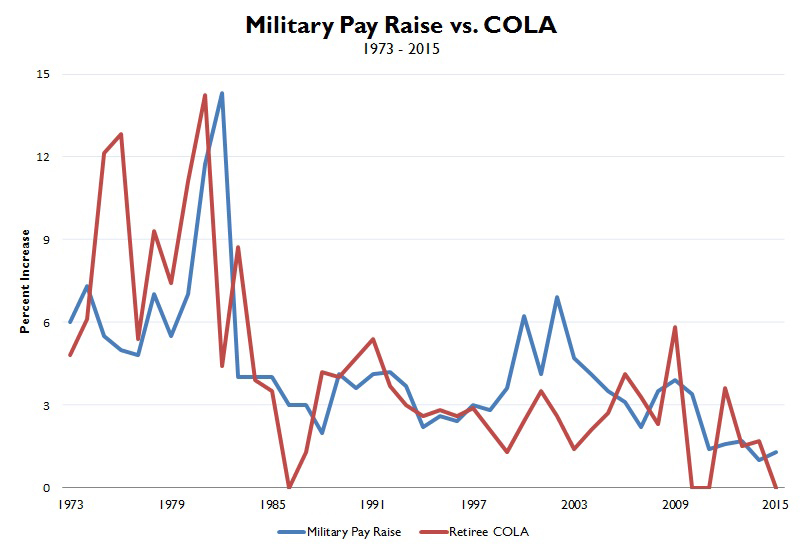October 16, 2015
The Bureau of Labor Statistics (BLS) released the September inflation figure this week and confirmed what most retirees already knew – there won’t be a cost-of-living adjustment (COLA) in 2016 for people collecting military retired pay, Social Security, VA compensation, or survivor benefits.
Falling gas prices are a key reason why the inflation index (and your COLA) tanked over the summer.
Retired pay increases are made each year to maintain the same level of purchasing power each servicemember had at retirement. This is accomplished through annual COLAs, which are based on the BLS’ Consumer Price Index (CPI) – the measure of inflation.
While most COLA increases are automatic, Congress must approve COLAs for veterans every year. This is largely so lawmakers can return to their home districts and say they did something for local constituents.
One question we get every year is “Why is the retired pay COLA (higher or lower) than the active duty pay raise?”
The simple answer is they’re tied to different things. COLAs are tied to changes in consumer prices, whereas active duty pay raises are (supposed to be) tied to the average American’s pay growth, as measured by BLS’ Employment Cost Index (ECI).
In many years from the mid-1970’s through the mid-90’s, COLAs were higher than active duty pay raises, primarily because active duty pay raises were capped below the ECI.
The track record for keeping annual retired pay COLAs up with the CPI has been far better, in part because inflation has been relatively low for many years.
In the late 1990's, chronic retention problems (from all those years of pay raise caps) led Congress to plus up active duty pay, so those raises were larger than COLAs from 1997-2005. More recently, the retiree COLA has exceeded the pay raise percentage in two of the past three years.

So what happens now, and what’s the implication for the 2017 COLA?
Because inflation for the full fiscal year actually declined by 0.4 percent, that means we’ll start 0.4 percent in the hole in measuring cumulative inflation for the January 2017 COLA.
